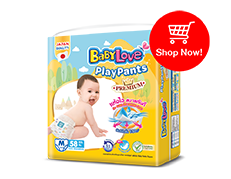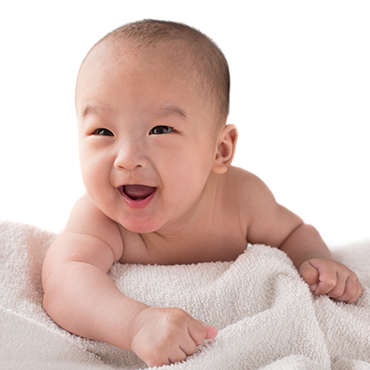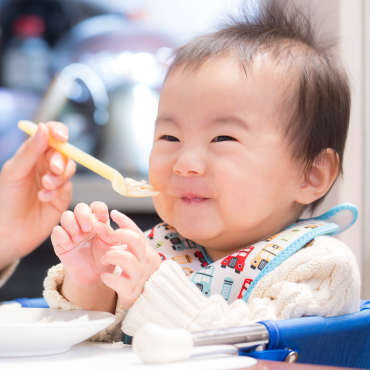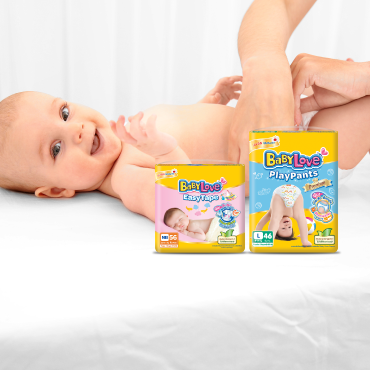Rash’ is a problem that usually upsets many parents. Every baby suffers from rash as some develop it even after they were born in only a few weeks. Others have rash when they are 3-4 months old while many have it when they grow up. Moreover, there are many types of rash: a small grain like red one, an insect bite one, a blister like one or simply a blister. Some rash lasts only a few days whereas other takes even some weeks. A lot of it is chronic because it can be found even when babies grow up. Consequently, rash is a main concern of many parents. Realizing it, Dr. Dear came up with useful information about frequently found rash so that parents have basic knowledge to care for their children.
1. Heat rash is usually found among newborn babies, especially when they have fever or stay in a hot area. It occurs after a blockage of sweat glands and a leak of sweat on the skin. It will look like a small blister or a pustule. Heat rash is frequent in summer, but less occurs in winter. It can be found on forehead, neck, armpits, or the upper part of the body, especially the part covered by thick clothes. To get rid of it, parents should use light and comfortable clothes or a diaper with wetness alerts, apart from avoid staying in a hot area.
2. Diaper rash occurs in summer and babies will have it in the part covered by a diaper. It looks like a red blister and can be found on buttocks, lower abdomen, genitals and inner thighs. Parents can prevent it by taking special care of body cleanliness of the baby, such as using diapers that well absorb babies’ urine besides applying skin cream like zinc and dexpanthenol, on the affected area. A steroid cream is recommended in case a baby develops a lot of diaper rash.
Selecting a diaper which underwent a hypoallergenic test is also an effective way to protect babies from diaper rash. Parents have to change a diaper every 3 hours, too.
3. Allergic rash is caused by touching some solutions, chemical substances or irritants. Looking like a small grain like red rash, a blister, a flat red blister, a small red bulge, this rash is itchy and can occur immediately after touching something or take some weeks to develop. Parents should know anything that is allergic to babies and avoid it. They have to select soft clothes or a baby soft touch diaper for babies.
4. Seborrheic rash, known also as seb derm, is found among babies of 2-10 weeks old. It looks like a dry yellow flake or a reddish brown one. It can occur with a red blister, as well, and is found on a head, eyebrows, cheek, front of the ear, behind the ear, outer ear, armpits and groin. It is little or not itchy at all. Frequent symptoms include yellowish red rash and oily scabs. It can be found on the head, hair, eyebrows, ear holes, behind the ears, around the nose, neck, armpits, groin or genitals. To take care of the babies, parents should avoid touching some parts of skin like face and they should wash babies’ face regularly and gently. Using mild cleansing products is recommended. A steroid cream can be used on the face, body and groin when inflammation starts. Afterwards, a ketoconazole drug will be applied twice a day until the rash is gone. For rash occurring on the sculp, a shampoo made from selenium sulfide, zinc pyrithione, tar or tioconzole is recommended.
5. Skin inflammation from allergy is chronic and looks like a small red grain on the skin. One may see a little lymph come out of it because the rash is itchy. The skin around the rash will feel too dry. Age also influences where the rash is found, and food allergy may cause it. Important care for this concerns moisture and clean and selecting appropriate products to moisture and clean skin.
6. Fungal rash occurs in summer because fungi grow well in this season. The rash can be red, white or a red blister and is often itchy. It can be found in any body part that is damp. If the symptom worsens, parents can use a drug that treats superficial mycosis of skin or, if the symptom persists, babies should have oral drugs.
Despite various kinds of rash, some close observations may help parents to distinguish it from others, even at the initial stage. However, it is recommendable that parents take their baby to a doctor for thorough and correct diagnoses.
Article by Dr. Warut Thongbai, Specialized Pediatrician in Allergy and Immunology
Crated At 12/05/2021



















